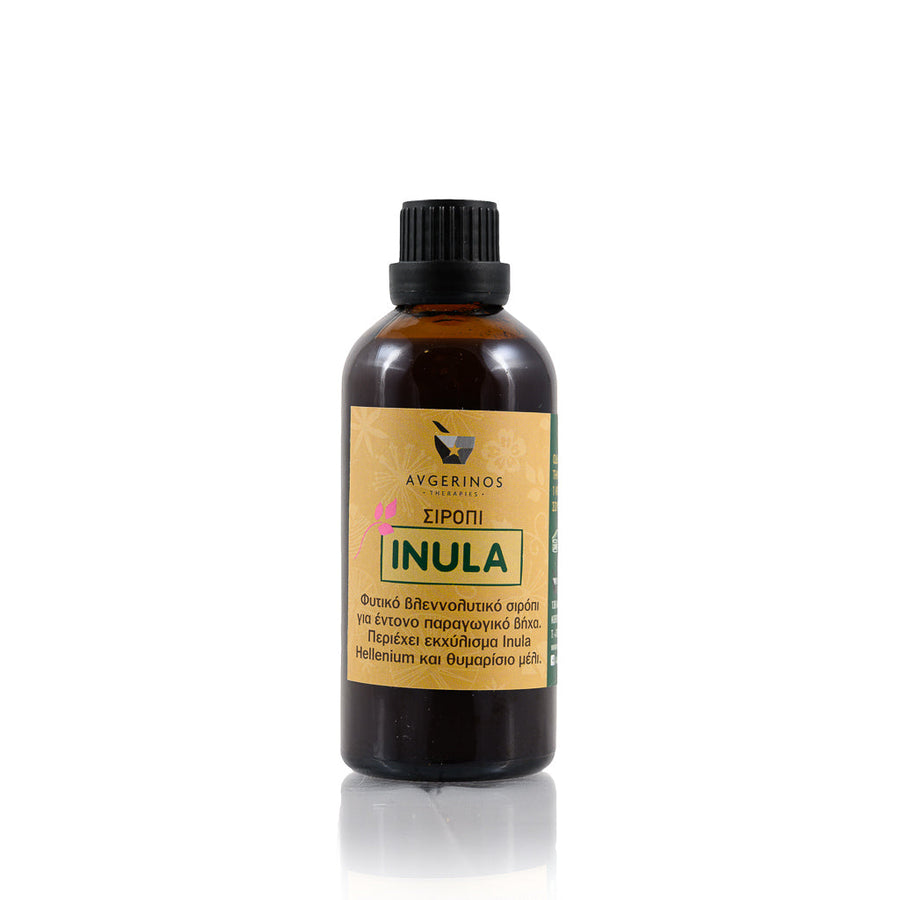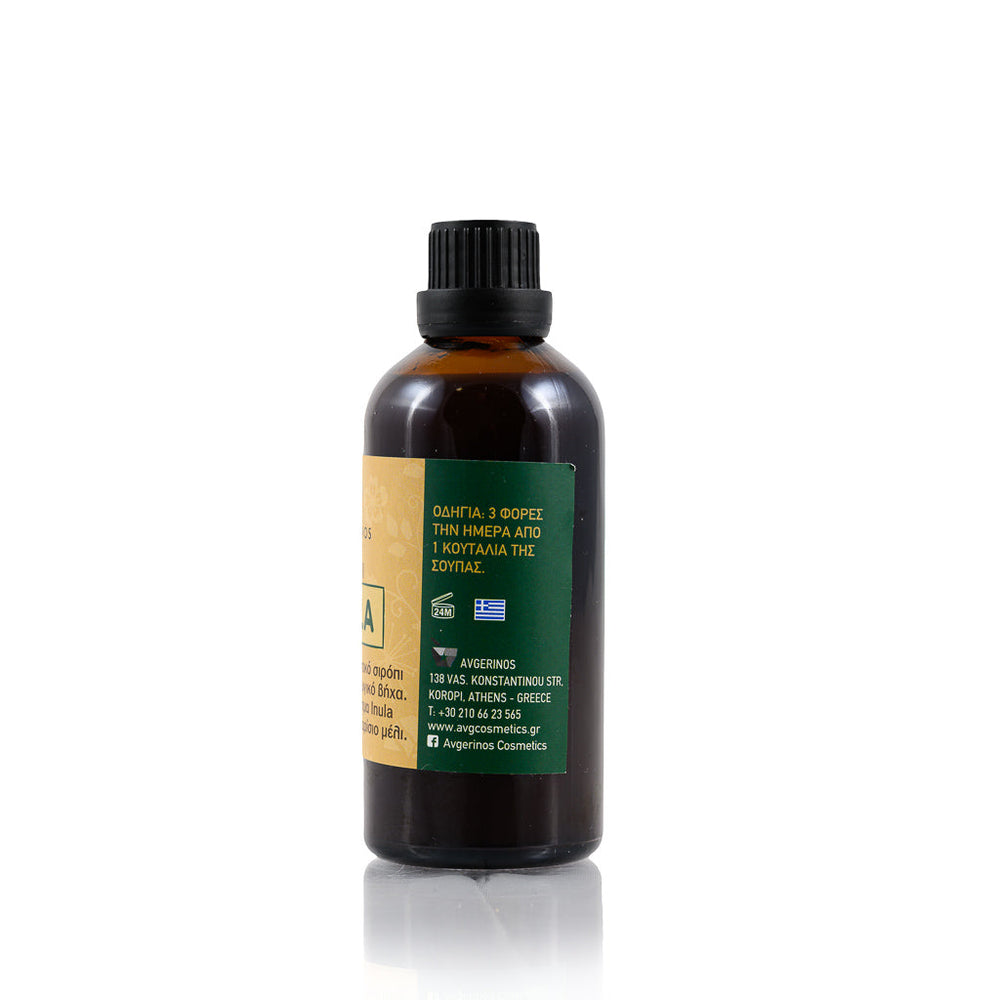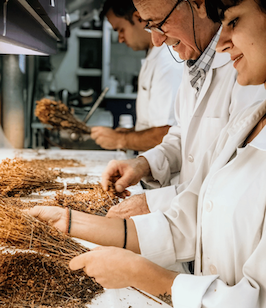Laurel, the ancient ingredient of victory
The Story of Daphne
In Ancient Greece, the plant was called dafni, after the mythical mountain nymph of the same name. In the myth of Apollo and Daphne, the god Apollo fell in love with Daphne - a priestess of Gaia (Mother Earth) - and when he tried to seduce her, she asked for help from Earth, who took her to Crete.
In place of the Laurel Woman Gaia left a laurel bush, from which Apollo made wreaths to console himself. This is presented in the myth that gives Daphne supernatural properties.
This laurel was then used to make the laurel wreath of Ancient Greece, which became a symbol of victory and the highest status.
A laurel wreath was given as a prize in the Pythian Games because the games were in honor of Apollo and the laurel was one of his symbols. According to the poet Lucian, the priestess of Apollo, known as Pythia, is said to have chewed bay leaves from a sacred tree growing inside the temple to induce the excitement (ecstasy) from which she uttered the oracular prophecies for which she was famous .Some testimonies starting from the fourth century BC. she is described as waving a laurel branch while delivering her prophecies. Those who received promising omens from the Pythias were crowned with laurel wreaths as a symbol of Apollo's favor
The symbolism carried by the laurels was also transferred to the Roman culture, which held the laurel as a symbol of victory and favor. It was also associated with immortality, purification, prosperity and health.
It is also the source of the words 'bachelor' and poet laureate, as well as the expressions 'assume the laurel' and 'rest on the laurels'.
Suetonius tells the story of Augustus' wife and Rome's first empress, Livia, who planted a laurel branch in the grounds of her villa at Prima Porta after an eagle dropped a bird into her lap with the branch clutched in its beak. The twig grew into a full-sized tree which in turn grew into an entire grove of laurels added by subsequent Emperors when they celebrated a triumph. The Emperors of the Julio-Claudian dynasty all sourced their laurel wreaths from the original tree planted by Libya.
Rome's second emperor Tiberius wore laurel wreaths whenever there was stormy weather because laurel trees were widely believed to be immune to lightning, providing protection to those who waved them.
Finally, it was considered as a harbinger of the imminent end of the dynasty, that in the reign of Nero the entire grove died, shortly before he was assassinated.
In modern Italy laurel wreaths are worn as a crown by graduating students.
Laurel Oil & Uses
Aromatherapy: In room fragrances but also as a massage oil in combination with other essential oils. Myrcene, a component of many essential oils used in perfumery, can be extracted from the bay leaf like eugenol and give very nice fragrances.
Hair loss: Laurel oil has been shown to have excellent properties in terms of hair loss and hair and skin rejuvenation. It can be used directly on the skin, nails or hair and needs at least 20 minutes to be absorbed.
For Wounds & Eczema: In herbal medicine, bay extracts have been used as an astringent, and in salves for open wounds. A traditional remedy for rashes caused by poison ivy, oak and nettle is a poultice soaked in boiled bay leaves
In Pain: It is also used in massage treatments since it soothes inflammation, rheumatism and arthritis due to the small amount of eucalyptol and eugenol it contains.
Insect repellent: Also Dafenlio in 2011 research has been shown to be able to be used as a strong insect repellent. A small amount is enough to repel moths, flies and cockroaches. Especially when the oil extract of Daphne is burned it releases substances toxic to the bugs.
Recipes around the world
Bay leaves are also used to make chicken in the Caribbean Islands and Mexico . They are soaked and placed on the cool side of the grill. Pimento sticks are placed on top of the leaves, the chicken is then smoked on top. The leaves are also added whole to soups, stews and other Caribbean dishes.
•They are most often used in Indian rice dishes such as biryani and as an ingredient in Garam masala. Bay leaves are called tezpattā (तेजपत्ता, in Hindi) and Tejpātā (टेजपाता) in Bengali. Culinarily, Indian bay leaves are quite different, with an aroma and flavor similar to cinnamon bark (cassia), but milder. (Cinnamomum tamala, Lauraceae)
•In the Philippines, dried bay leaves are used in many Filipino dishes such as menudo, beef pares and adobo.
• The ground bay leaves are part of the traditional recipe of the well-known Bloody Mary drink.
•In Italy, bay leaves are mainly used in pasta sauces and stews.
• California bay leaf (Umbellularia californica, Lauraceae), also known as California bay, Oregon myrtle, and pepperwood, is similar to Mediterranean bay, but contains the toxin umbellulone, which can cause methemoglobinemia.
Cuisine
Fresh or dried bay leaves are used in cooking for their characteristic flavor and aroma. The leaves should be removed from cooked food before eating (see below). The leaves are often used to flavor soups, stews, stews and pates in many countries. The fresh leaves are very mild and do not develop their full flavor until several weeks after being picked and dried. When the leaf is dried, the aroma is herbal, slightly floral and somewhat similar to oregano and thyme.
The plant is used in a wide variety of recipes, particularly among Mediterranean cuisines. Whole bay leaves have a long shelf life of about a year under normal temperature and humidity. They are used almost exclusively as flavoring agents during the food preparation stage.
{ Busted: Some members of the bay family, as well as the unrelated but visually similar bay cherry, have leaves that are poisonous to humans and animals. While these plants are not sold anywhere for culinary use, their visual resemblance to bay leaves has led to the oft-repeated belief that bay leaves should be removed from food after cooking because they are poisonous. This is not true. Bay leaves can be eaten without toxic effect. However, they remain unpleasantly stiff, even after thorough cooking, and if swallowed whole or in large pieces can be a hazard and damage the digestive system. So most recipes using bay leaves will suggest removing them after the cooking process is complete.}
Chemical composition
The leaves contain about 1.3% essential oils (ol. lauri folii), consisting of 45% eucalyptol, 12% other terpenes, 8-12% terpinyl acetate, 3-4% sesquiterpenes, 3% methyleugenol and other α- and β-pinene, phellandrene, linalool, geraniol, terpineol and also contain lauric acid. The chemical compound lauroside B has been isolated from Laurus nobilis. Myrcene, a component of many essential oils used in perfumery, can be extracted from the bay leaf. They also contain eugenol.
Summary
Laurus nobilis is an aromatic evergreen micro tree or shrub with green, smooth leaves. It belongs to the family of flowering plants Lauraceae. It is native to the Mediterranean region and is used as a bay leaf for seasoning in cooking. Its common names include bay tree, bay laurel, sweet bay, true laurel, Greek laurel or simply laurel. Laurus nobilis occupies a prominent place in classical Greco-Roman culture. Dried bay berries and pressed leaf oil can both be used as strong spices, and its wood can be burned for a strong smoky aroma.









Leave a comment